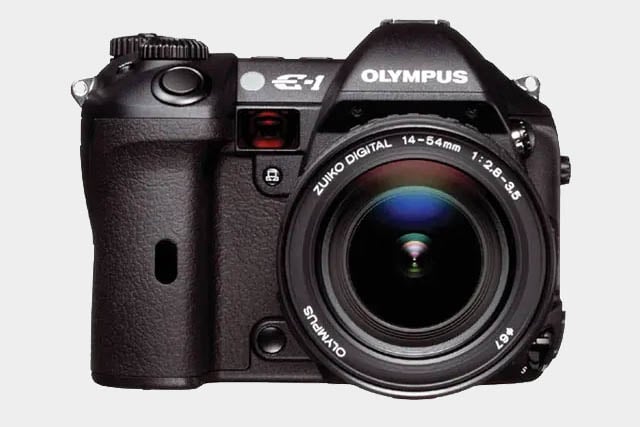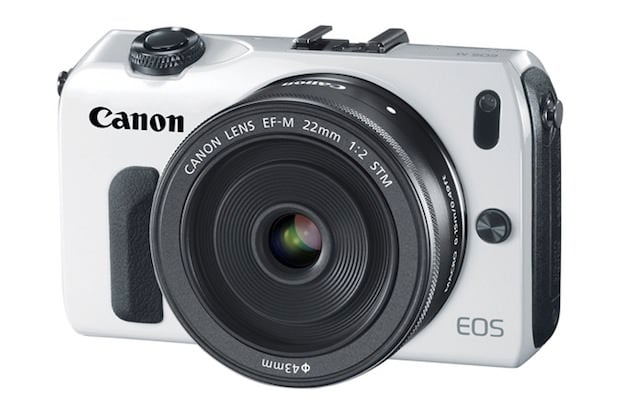Will Canon Scrap the EOS M Mirrorless Lineup and EF-M Mount?

The announcement has landed and it’s now official: Canon has launched an APS-C RF-mount digicam. In fact, it hasn’t just released one – but two – in the form of the R7 and R10. It might sound unusual, on condition that Sony and Nikon have had APS-C fashions for a while, however it is a huge deal as a result of Canon already has the EF-M mount and EOS M APS-C mirrorless vary. This begs the query, is Canon about to scrap the EOS M line?
Panasonic and Olympus ushered within the new age of mirrorless cameras with the formation of the Micro 4 Thirds consortium and the discharge of the Panasonic G1. It was a daring transfer that oddly had its origins in Olympus’s failure to transition the unique movie OM to digital. This failure led it to rethink what a contemporary digital digicam needs to be, releasing the 4 Thirds E-1 in 2003.

The digicam was a professional mannequin focused at journalists and sports activities shooters however, for a spread of causes, by no means took off. Quick-forward to 2008, and Micro 4 Thirds is similar system however with out the mirror field. It changed the optical viewfinder with an digital viewfinder (or rear show) and, in so doing, simplified the bodily design by permitting the elimination of the mirror field and pentaprism.
Whereas this may increasingly appear logical to us with the advantage of hindsight, it was technology-leading on the time and the influence can’t be overstated, as a result of each single producer launched a brand new mirrorless system (and Pentax launched two!) every with their very own spin on what mirrorless needs to be.
The Canon EOS M Line and EF-M Mount
Canon was hardly fast at becoming a member of the mirrorless celebration, following Sony (2010), Nikon (2011), and Fuji (2012) with the release of the EOS M in 2012. Like Sony and Fuji, it kitted its digicam out with an APS-C sensor (1.5 crop issue) in an effort to get a delightful mixture of picture high quality and digicam measurement. That is in distinction to Nikon which used a CX sensor (2.7 crop issue) which could have appeared like a good suggestion on the time however positioned limitations on picture high quality and depth-of-field.
That stated, what each Nikon and Canon had in widespread was their strategy to mirrorless: these had been seen as client merchandise and there was by no means any intention {that a} mirrorless digicam could be focused at working professionals. The pondering behind this strategic resolution was two-fold. Firstly, the technological underpinnings of mirrorless cameras had been sound, however their implementation was flawed. Comparatively poor contrast-based autofocus techniques and restricted battery life meant they weren’t prepared for the prime-time.

Secondly, DSLRs were making good money! They peaked in cargo worth in 2012 and have become the most important digicam section in 2013. Why introduce a digicam system that may cannibalize your profitable DSLR gross sales, whereas on the similar time performing much less nicely?
Then all of it modified when Sony introduced the full-frame a7 in 2013; out of the blue these cumbersome DSLRs appeared like yesterday’s tech and — whereas not flawless — the longer term was clear to see.
This all brings us again to the EOS M line and the 2 principal issues in transitioning to a full-frame mirrorless system. Firstly, the mount has related specs to the Sony E-mount and was designed for an APS-C sensor. When you can squeeze a full-frame sensor inside — and Sony has completed simply this — it comes with technical limitations compared to mounts which are particularly designed for full-frame, which each the Canon RF-mount and Nikon Z-mount are.
If Canon was going to provide a full-frame mirrorless digicam system to interchange its DSLRs, then it wouldn’t be following the route Sony took, however ranging from scratch to provide one thing each best-in-class and designed to be long-lived. Secondly, the present lineup of lenses for EF-M was vanishingly small and nonetheless stands at solely eight. Beginning once more with a brand new mount made way more sense.
Enter the RF-Mount
It’s debatable as to when Canon determined to develop the RF-mount, however in all probability round 2015 after having seen the success of the a7. Nikon and Canon confronted a dilemma: they each had APS-C and full-frame DSLRs, alongside separate, consumer-oriented, mirrorless techniques. What type ought to their new skilled mirrorless techniques take?
Sony had already taken the plunge with APS-C and full-frame fashions, with lens techniques designed for every sensor measurement that had been absolutely interchangeable. It made for a versatile system that customers preferred. Nikon is following go well with, implementing a “floor zero” resolution. It has already scrapped its mirrorless 1 System and has made it clear it is all but abandoning its DSLR offerings. It’s the Z-system all the way in which, which has ASP-C and full-frame choices, once more all absolutely interchangeable. In truth, the corporate made its intent clear early on, releasing its first Z-system cameras in 2018 (the Z6 and Z7), following them up in 2019 with the APS-C Z50.
In the meantime, Canon steadfastly caught to a full-frame solely mantra and it took till 2021 for the APS-C rumors to emerge, with the cameras arriving in 2022. The well-specified R7 has impressed us at PetaPixel, whereas the R10 is a budget-friendly powerhouse.
Each are in a position to take full-frame lenses, though it might seem – along with the 18-150mm – that APS-C particular fashions are on their approach. Whereas Canon has considerably fleshed out the RF lens vary, they don’t essentially make a complete lot of sense for these new APS-C cameras for worth, measurement/weight, or focal size causes.
Which APS-C Future?
In mild of this historical past of Canon’s involvement in mirrorless cameras, it’s pure to surprise what the corporate now plans to do with its EOS, EOS M, and RF APS-C cameras. That’s plenty of APS-C cameras and lenses to proceed promoting and growing. Coping with the second level first… it might appear doubtless that there can be no improvement of both the EOS or EOS M strains. Specifically, the DSLR EOS vary is at a useless finish, and whereas Canon seems joyful to proceed producing them for keen patrons, it’s the tip of the road. Nikon’s exit from the DSLR market could put an additional spin on this section as gross sales might oddly start to extend for Canon, nevertheless that’s unlikely to result in new fashions.
That leaves the EOS M and Canon’s persistence in holding the vary alive, even when the lineup of 4 cameras was final refreshed with the M50 Mark II in 2020. Maybe one of many causes for that is that they promote nicely in Japan and frequently high the BCN gross sales rankings. In that sense, they each generate income and are fashionable within the necessary dwelling market. Do they make sufficient cash to proceed growing them? The discharge of two RF-mount cameras and an RF-S lens suggests not.
Canon categorically denies that both the EOS or EOS M ranges can be discontinued and that — on face worth — appears to make financial sense. For the way for much longer this continues to be the case stays to be seen, however I might be stunned if we see many cameras in these ranges surviving past 2025. It’s an RF future.